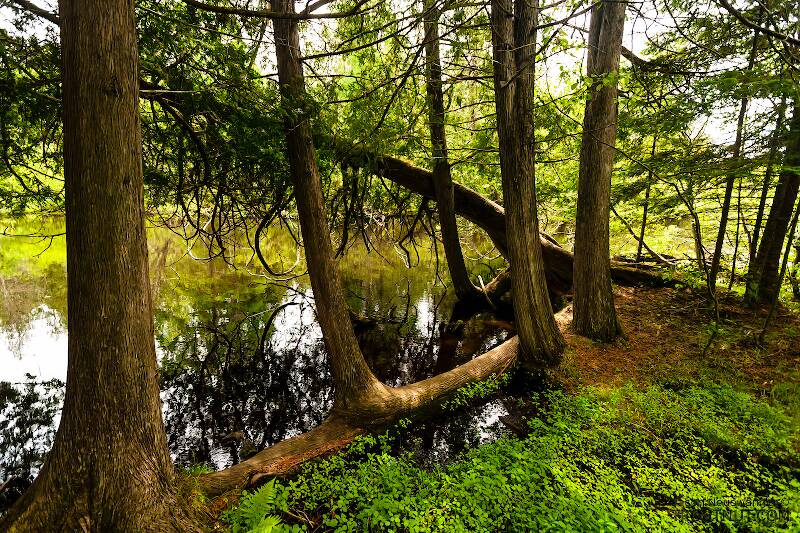
Hex Mayflies
Hexagenia limbata
The famous nocturnal Hex hatch of the Midwest (and a few other lucky locations) stirs to the surface mythically large brown trout that only touch streamers for the rest of the year.

I'm calling this one Pycnopsyche, but it's a bit perplexing. It seems to key definitively to at least Couplet 8 of the Key to Genera of Limnephilidae Larvae. That narrows it down to three genera, and the case seems wrong for the other two. The case looks right for Pycnopsyche, and it fits one of the key characteristics: "Abdominal sternum II without chloride epithelium and abdominal segment IX with only single seta on each side of dorsal sclerite." However, the characteristic "metanotal sa1 sclerites not fused, although often contiguous" does not seem to fit well. Those sclerites sure look fused to me, although I can make out a thin groove in the touching halves in the anterior half under the microscope. Perhaps this is a regional variation.
The only species of Pycnopsyche documented in Washington state is Pycnopsyche guttifera, and the colors and markings around the head of this specimen seem to match very well a specimen of that species from Massachusetts on Bugguide. So I am placing it in that species for now.
Whatever species this is, I photographed another specimen of seemingly the same species from the same spot a couple months later.

Specific collection sites for Capniidae
Specific collection sites for Capniidae
The specific collection location data from this map were pulled from the Global Biodiversity Information Facility (GBIF) website under the Creative Commons license. Data there come from a variety of sources, some of which are populated by hobbyists. Both the precision of the location and accuracy of the identification could be low. This map is not an authoritative scientific source, nor an exhaustive list of everwhere this taxon is found, but it should be good enough for anglers. Click each marker on the map for more information about that report, including a link to more details on GBIF.
There are 8898 reported locations for this taxon in the database. Only randomly selected 2000 have been shown here to avoid overloading your browser. Reloading the page will again choose a random 2000.

